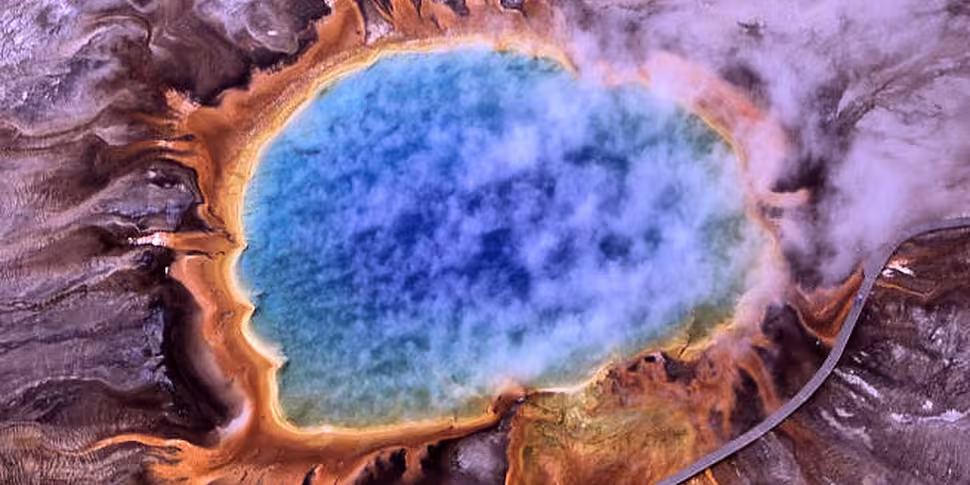It’s the second most important scientific question of them all: what was the catalyst that kick-started life on Earth? (the most important question is, naturally, ‘what kick-started the Universe?’)
Geochemist Prof. Steven Benner is proposing that life on Earth might have its origins on Mars. According to Benner, "the evidence seems to be building that we are actually all Martians; that life started on Mars and came to Earth on a rock”.
Prehistoric Mars, the theory goes, was actually supportive of life, until asteroids pummeled away at it, leaving the planet hostile and barren. A Martian meteorite carrying one of the most important elements for life - Benner’s specific, saying it’s “an oxidized mineral form of the element molybdenum” - travelled to Earth, and there found the environmental conditions necessary to evolve into life as we know it.
Benner’s theory is backed by evidence from NASA Mars exploration programmes that has shown ancient Mars may have been conducive to life, millions upon millions of years ago. Benner suggests some of those conditions may remain to this day.
Of course, this is a simplified version of the theory, which goes into much more depth about the various processes and elements believed to be necessary to life’s origins. Still, it’s just one of many hypotheses out there to try and explain such a fundamental mystery.
Abiogenesis
Abiogenesis is the study of how life might have arisen from natural compounds and processes. Among scientists and the public, perhaps the most subscribed to theory is that of the ‘primordial soup’. This theory suggests that prehistoric Earth’s atmosphere, exposed to various types of energy, produced basic organic compounds. These gathered together in a sort of ‘soup’, which - itself exposed to various environmental conditions - eventually hosted more complex organic compounds and, ultimately, life.
However, critics argue that the primordial soup theory - initially proposed in the 1920s - has not yet satisfactorily explained how the simple compounds came together to produce the much more complex ones. Various scientists have offered further theories to ‘fill in the gap’, so to speak, although nothing approaching consensus has yet been achieved.
Others have offered a major range of abiogenesis models - some building on the likes of primordial soup theory while others differ substantially. There’s too many, and they’re too complicated, to describe in much detail. Here's a very quick overview of some of the more intriguing:
- The ‘radioactive beach’ hypothesis proposes that uranium beaches, created through tidal patterns when the moon was closer to Earth, started nuclear reactions that, by providing energy to support the necessary chemical reactions, helped develop the foundations of life.
- Deep-sea vents, pouring out substances from beneath the Earth’s surface, may have provided the necessary chemicals and energy to kick-start the complicated processes of evolution. Hot springs are also often believed to be potential 'life catalysts'.
- A foam of bubbles was created by waves crashing against the seashore. These bubbles - spread by wind - supported naturally occurring chemical reactions, with the products being released when the bubbles eventually burst.
- A variant on the bubble theory, the 'pumice raft' theory suggests a similar bubble-based activity, but located on the sometimes giant pumice stone masses created as a result of volcanic activity. Pores in the floating rock protected the bubble foam from the elements, encouraging natural experimentation. Later, some suggest pumice rafts helped spread life around the globe.
All these theories - and many others - have their supporters and defenders, and in many cases more questions are raised than answered. Indeed, the reality may be some combination of them all, or maybe something else entirely.
Panspermia
The recent Mars proposal, meanwhile, is just the latest in theories of extraterrestrial abiogenesis, sometimes called panspermia. Panspermia variations suggest the amino acids necessary for life were formed outside Earth, and travelled to our little planet via comets. Life, simply put, is too complex to have originated on Earth as we understand it.
Naturally, panspermia is also where some of the more ‘controversial’ theories start arising - like whether or not intelligent alien beings actually transported primitive life to Earth on well-protected spacecrafts. Such theories, you won’t be surprised to hear, have fewer supporters in the scientific community than some of the hypotheses mentioned above, with at best minimal evidence backing them up. And they only lead to more questions, like where did the exterrestrial life come from?
Even if the more fantastical theories are hard to take seriously, however, more plausible ideas like the Mars thesis suggest that the truth may very well be somewhere out there in the vastness of space.
For more on the wonderful world of science, check out Futureproof on Newstalk every Saturday at 10 AM.









